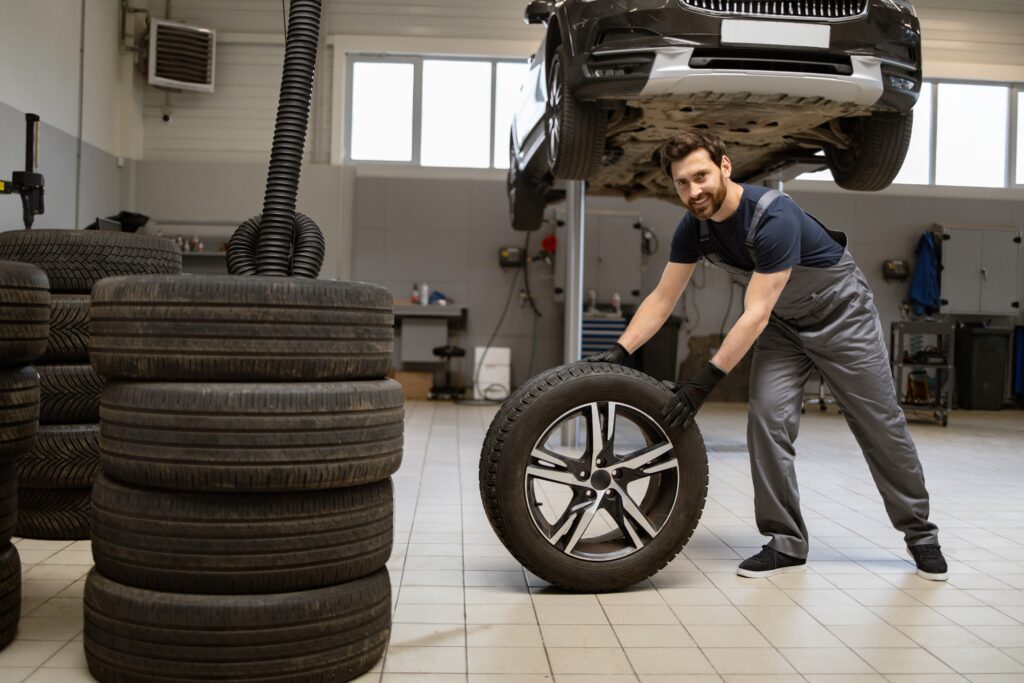Tire Rotation 101: How Often and Why It Matters

Regular tire rotation is critical for even wear, better handling, and improved tire lifespan. This guide will cover everything you need to know about tire rotation frequency, tire care, and the factors that impact when you should rotate your tires.
Why You Need to Rotate Your Tires
Tires wear down over time due to friction with the road. The front tires typically wear faster than the rear tires because they bear the weight of the engine and handle steering. Additionally, different driving conditions can cause uneven wear patterns. If you don’t rotate your tires, you may end up with worn tires that compromise safety and performance.
Understanding Tire Rotation Patterns
There are several common tire rotation patterns based on the type of vehicle you drive:
- Front to Back: This pattern is suitable for rear-wheel drive vehicles. It involves moving the front tires to the back and the rear tires to the front.
- Left to Right: This pattern is often used for front-wheel drive vehicles. The front tires move side to side, while the rear tires stay in their original positions.
- Directional Tires: Some tires have a specific direction of rotation. These tires must stay on the same side of the vehicle, but they can still be rotated front to back.
Factors That Determine How Often You Should Rotate Your Tires
- Manufacturer’s Recommendations: Always refer to your vehicle’s manual for specific guidelines. The manufacturer may provide a tire rotation schedule that outlines how often to rotate tires based on your vehicle type and tire specifications.
- Driving Conditions: If you often drive on rough roads or in extreme weather conditions, you may need to rotate your tires more frequently. High-performance tires may also require more regular rotations.
- Type of Tire: Different tire types have different wear patterns. For example, all-season tires may require less frequent rotations than performance tires.
- Vehicle Type: Front-wheel drive, rear-wheel drive, and all-wheel drive vehicles wear tires differently. A vehicle’s drive type can influence how often you need to get your tires rotated.
How Often Should I Get My Tires Rotated?
Most experts recommend rotating your tires every 5,000 to 7,500 miles. However, you should always check your owner’s manual for the specific recommendation for your vehicle. In some cases, tire rotation may coincide with regular oil changes.
If you can’t remember the last time you had your tires rotated, it may be time to schedule an appointment. Regular check-ups help maintain your car’s tires and overall performance.
Signs You May Need a Tire Rotation
You should keep an eye on your tires to ensure they wear evenly. Here are some signs that you may need a tire rotation:
- Uneven Tread Wear: If you notice that the tread on your front tires is significantly lower than on your rear tires, it may be time for a rotation. Uneven wear patterns can indicate that your tires are not rotating as they should.
- Vibration or Noise: If your car vibrates or makes unusual noises while driving, this may indicate that your tires need to be rotated or balanced.
- Warning Light: Some vehicles come equipped with a tire pressure monitoring system (TPMS) that alerts you when tire pressure is low. A warning light may also indicate that it’s time to rotate your tires.
Getting Your Tires Rotated
You can get your tires rotated at a tire shop, dealership, or service center. A qualified tire technician can check the alignment and balance of your tires while performing a rotation. This ensures that your tires wear evenly and that your vehicle handles properly.
Tire Rotation Frequency and Timing
It’s essential to establish a routine for tire rotations. Consider these options for how often to rotate your tires:
- Every Oil Change: If you change your oil every 5,000 miles, this can serve as a good reminder to get your tires rotated as well.
- Every 6 Months: If you don’t drive frequently, you can still check your tires every six months for wear and rotate them if necessary.
- After Long Trips: If you take long road trips, consider rotating your tires afterward. This ensures even wear after extended driving periods.
Conclusion
Maintaining your tires through regular rotations is vital for safety and performance. Understanding how often to rotate tires depends on factors like your vehicle type, tire type, and driving conditions. Always refer to your manufacturer’s recommendations and be attentive to your tire’s wear patterns. Keeping your tires in top condition not only enhances your driving experience but also extends the life of your tires.
Regular maintenance, such as tire rotation, can save you money in the long run by preventing premature tire wear and the need for costly replacements. If you have any questions or need assistance, don’t hesitate to reach out to Premier AutoGroup.





